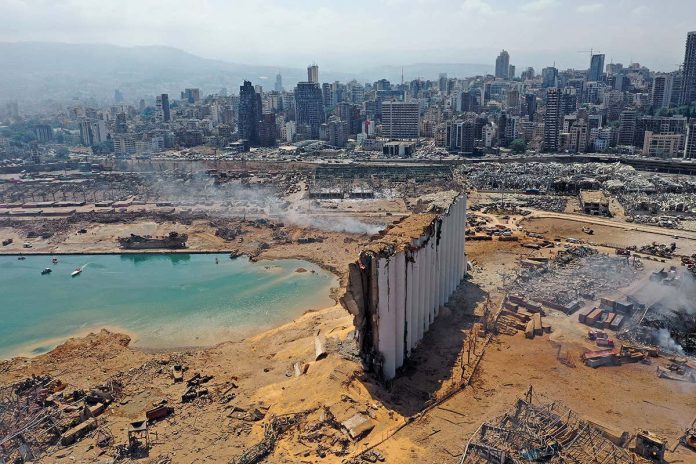[ad_1]

AFP / Getty Images
A massive blast on 4 August has caused widespread damage in the port area of the city of Beirut in Lebanon, with 100 people reported dead and 4000 injured. Here’s what we know so far.
What caused the explosion?
The blast was caused by 2750 tonnes of ammonium nitrate stored in a warehouse at the port. What set it off isn’t yet clear, but it was almost certainly a fire nearby. There are reports that a container of fireworks was burning. “100 per cent of explosions of ammonium nitrate in storage are due to uncontrolled fires,” says Vyto Babrauskas, a New York-based consultant who has written several papers on ammonium nitrate accidents.
Advertisement
What is ammonium nitrate?
It’s a white, salt-like solid mainly used as a fertiliser. It isn’t flammable in its pure form, but when heated can decompose in numerous different ways, releasing gases and more heat. If enough heat is released, this reaction can spread rapidly, producing a large amount of gas all at once – an explosion. Ammonium nitrate is much more explosive when mixed with carbon compounds such as fuel oil or even coal dust, which may have been a contributing factor.
Has this kind of thing happened before?
There have been numerous explosions around the world due to ammonium nitrate. The worst was in 1947, when more than 500 people died in Texas City during the unloading of a ship carrying 2300 tonnes of ammonium nitrate. The most recent was in West, Texas, in 2013, when 15 people died after an explosion in a fertiliser warehouse. Video footage of that explosion resembles that from Beirut, says Babrauskas. “Beirut is the same thing, just done bigger.”
Why was such a large quantity of ammonium nitrate stored at the port?
It reportedly came from a ship that was meant to take it to Mozambique in 2013. The ship was forced to enter the port after developing technical problems and wasn’t allowed to continue its voyage. It was abandoned by the owners, and its cargo moved to a warehouse.
So it was just left there?
Port officials tried to get rid of it. They sent a number of letters to a judge between 2014 and 2017 requesting assistance to export or sell the material, reports Reuters.
Was it stored properly?
Photos suggest the ammonium nitrate was stored in a normal warehouse. Ammonium nitrate should be stored in a non-combustible building, such as one made from concrete, with no combustible materials in it or nearby, says Babrauskas. “We have known for around 150 years how to completely preclude uncontrolled fires in storage,” he says. “It is entirely avoidable.”
What was that strange white cloud that appeared briefly during the main explosion?
That was the shockwave from the blast making water in the air condense. A shockwave is a fast-moving area of high pressure. Immediately behind it there is a sudden drop in pressure and thus temperature, which causes condensation. The same effect causes the vapour cone around aircraft flying near or above the speed of sound.
And the red smoke visible before and after the shockwave?
That’s nitrogen dioxide, one of the chemicals that can be produced when ammonium nitrate decomposes. “If you see red fumes, run very fast,” says Babrauskas. We breathe in nitrogen dioxide all the time because it is an air pollutant produced by traffic, but its colour isn’t obvious because it is present only in trace amounts.
Could this happen again somewhere else?
Yes. For instance, Babrauskas says there have been no regulatory changes in the US since the explosion in Texas in 2013.
More on these topics:
[ad_2]
Source link











